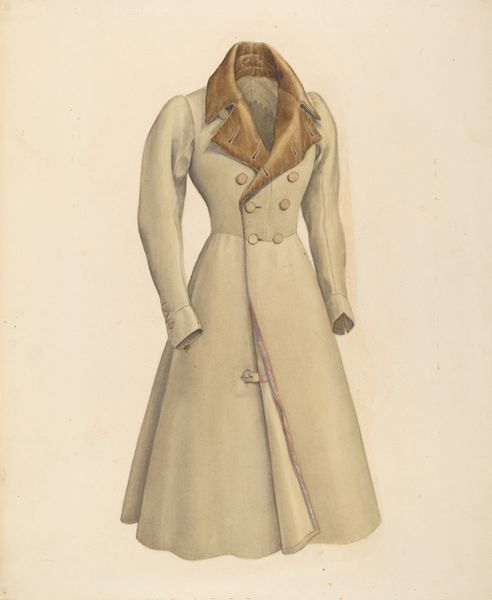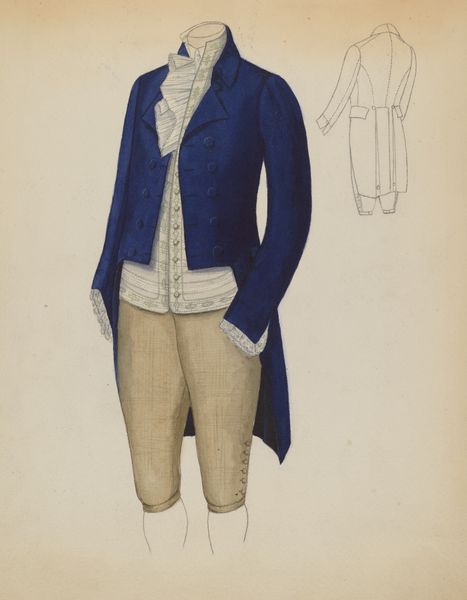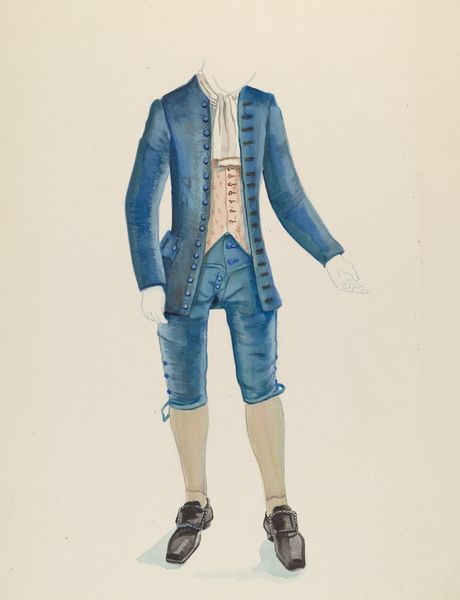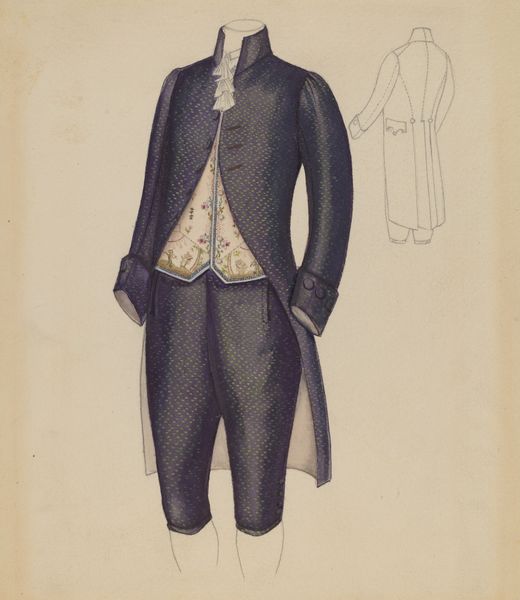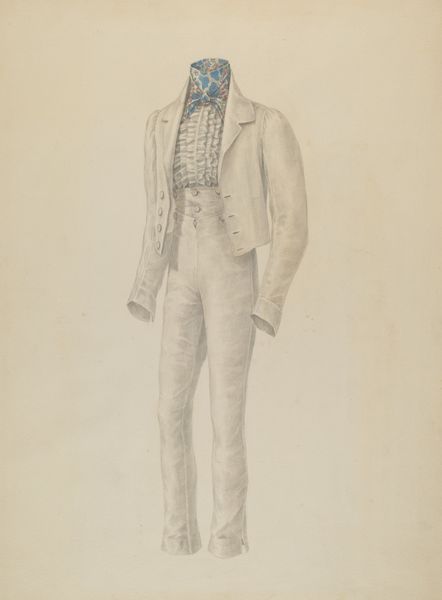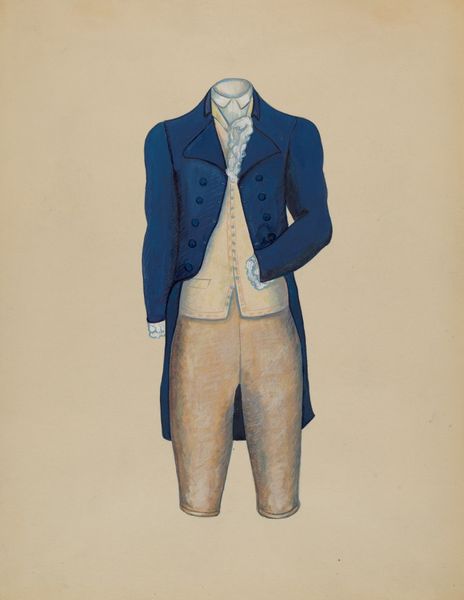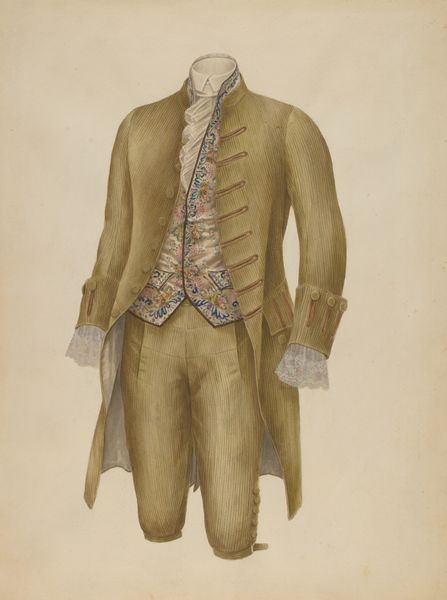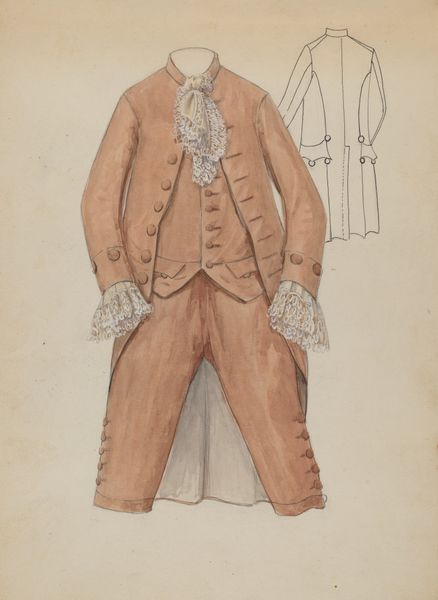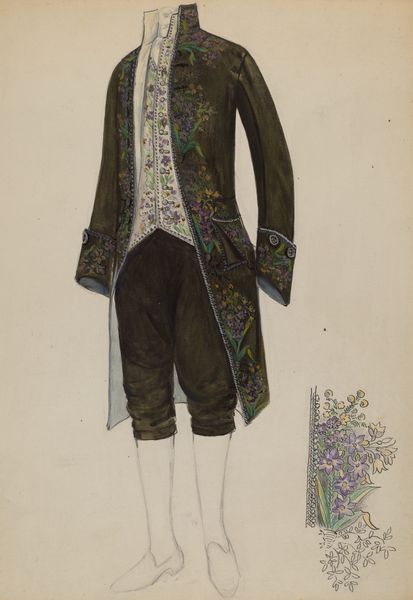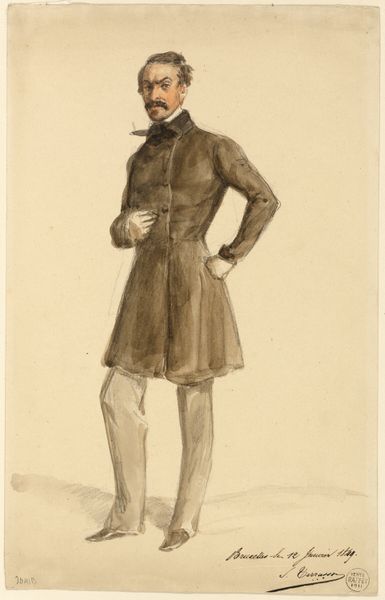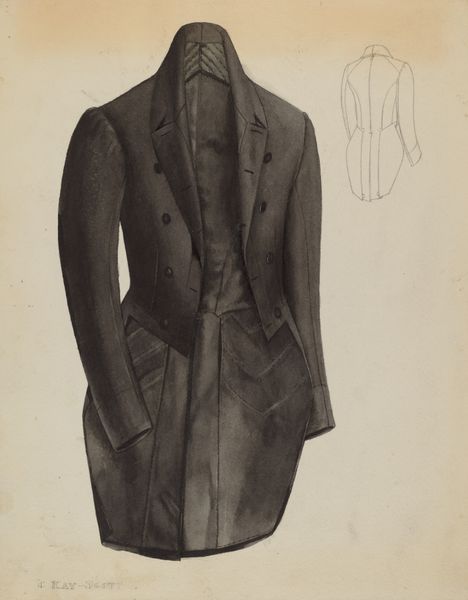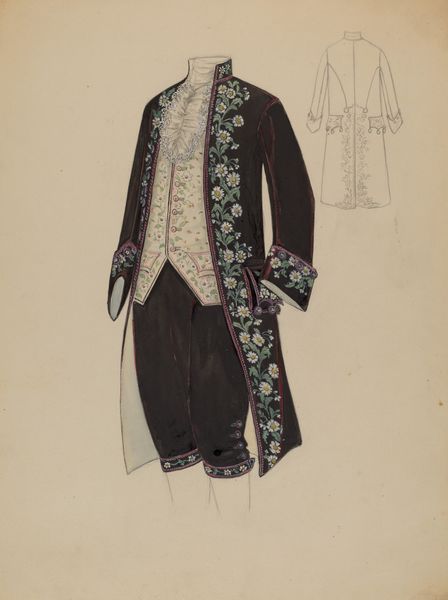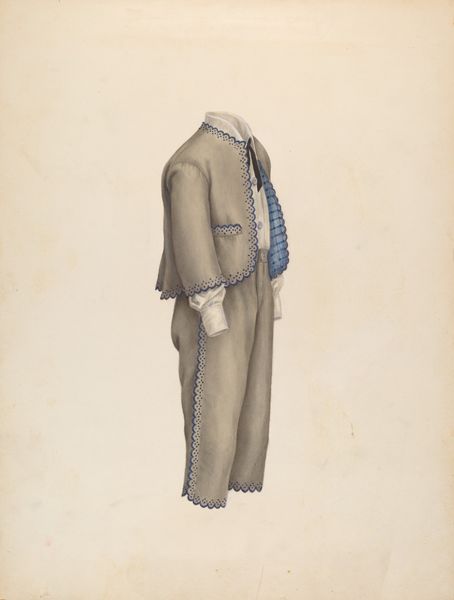
drawing, painting, acrylic-paint, watercolor
#
drawing
#
painting
#
acrylic-paint
#
watercolor
#
watercolor
Dimensions: overall: 36.6 x 28 cm (14 7/16 x 11 in.)
Copyright: National Gallery of Art: CC0 1.0
Curator: Looking at Mary E. Humes’ watercolor and acrylic painting "Man's Coat & Waistcoat," created around 1937, I am immediately struck by its ghostliness. There's an emptiness to it, a sense of absence. Editor: Indeed. The empty clothes suggest a kind of melancholic reverie. Is it a study of transient fashion or a statement about a vanishing society? Curator: Perhaps both. The painting was produced as part of the Federal Art Project during the Great Depression. This project employed artists to create works documenting and celebrating American life, and also providing designs and templates for various projects. Editor: So the design served a functional role beyond art, like for theater costumes or historical documentation. I notice that the color palette is delicate. It’s almost faded like an antique, heightening that feeling of wistful nostalgia. Curator: Precisely. The choice of watercolors and muted blues speaks to an appreciation of understated elegance while perhaps offering affordable costume solutions for local community projects that would be put on to promote morale. It feels particularly poignant in light of the economic hardships. Editor: I'm curious about the lace embellishments—so ornate. It brings an element of fragile beauty, evoking historical notions of nobility juxtaposed with the austerity of the Depression era. It hints at yearning for the past in a time of great difficulty. Curator: Absolutely. Humes offers not just an aesthetic study but a potent visual metaphor that blends social context with historical symbolism. This image can act as a testament to the New Deal art initiatives but also act as a portal into personal imagination through period costumes and history. Editor: It also strikes me that depicting mere clothing offers a surprisingly personal glimpse into forgotten worlds of material culture, inviting us to imagine the untold stories of their wearer, and consider the function these forms served through public projects of the 1930's. Curator: It prompts us to appreciate Humes' contribution in documenting objects during such significant events. Editor: I think this artwork carries with it many threads from those moments.
Comments
No comments
Be the first to comment and join the conversation on the ultimate creative platform.

